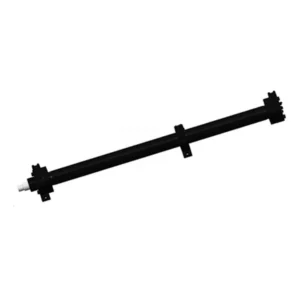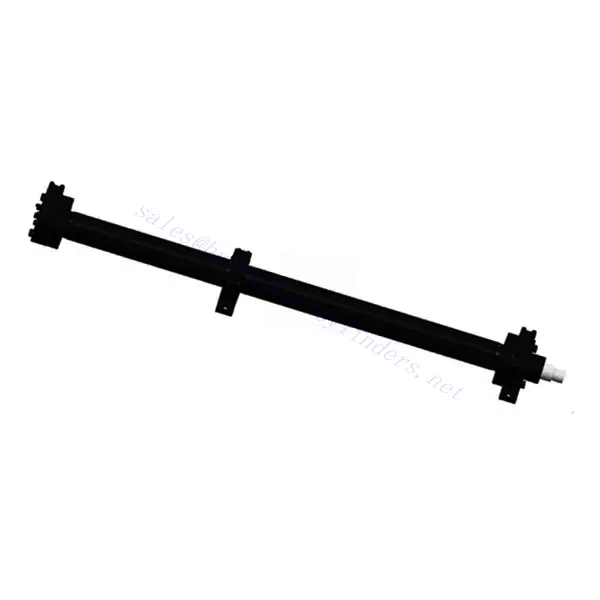Press Lateral Shift Anvil Cylinder
Press Lateral Shift Anvil Cylinder

The press lateral shift anvil cylinder is a cutting-edge component designed to optimize pressing operations in various industries. With its advanced features and reliable performance, this cylinder offers enhanced precision, efficiency, and versatility.
The press lateral shift anvil cylinder is a powerful tool for enhancing precision, efficiency, and versatility in pressing operations. With its lateral shift capability, high accuracy, fast process, and compatibility with various applications, this cylinder empowers you to achieve superior results. By following the recommended usage methods and maintenance practices, you can maximize your pressing operations’ performance, productivity, and lifespan. Choose the press lateral shift anvil cylinder to streamline your pressing processes and unlock new levels of precision and efficiency.
Press Lateral Shift Anvil Cylinder Key Characteristics:
- Lateral Shift Capability:
- The Press Lateral Shift Anvil Cylinder features a unique lateral shift mechanism that allows for precise positioning of the anvil.
- This lateral shift capability enables accurate alignment with the pressing material, ensuring optimal results and reducing setup time.
- High Precision:
- This cylinder provides exceptional precision in lateral shifting, allowing for fine adjustments in the anvil position.
- With its high precision, it ensures consistent and accurate alignment, resulting in superior pressing quality.
- Fast and Efficient Operation:
- The Press Lateral Shift Anvil Cylinder is designed for swift and efficient operation, maximizing productivity.
- Its advanced hydraulic system enables rapid lateral shifting, reducing cycle times and increasing overall output.
- Versatility:
- This cylinder is compatible with a wide range of pressing applications, accommodating various materials and shapes.
- Whether you’re working with sheet metal, plastics, or other materials, the Press Lateral Shift Anvil Cylinder offers versatility to meet your pressing needs.
Press Lateral Shift Anvil Cylinder Parameter:
| Product Name | Hydraulic Press Lateral Shift Anvil Cylinder |
| Features: | Move the anvil laterally |
| Bore diameter: | 125mm~250mm |
| Rod diameter: | 90mm~180mm Stroke≤5500mm |
| Thrust force: | Maximum 1546KN (Bore diameter: 250mm/pressure31.5MPa) |
| Lateral Shift Anvil Cylinder Applications: | Hydraulic Press |
Rod diameter: 90mm~180mm
Stroke≤5500mm
(Bore diameter: 250mm/pressure31.5MPa)
Press Cylinder Factory:

Usage Method Of Press Lateral Shift Anvil Cylinder:
- Installation and Integration:
- Mount the Press Lateral Shift Anvil Cylinder securely onto the press frame or designated mounting area.
- Ensure proper alignment and connection, following the manufacturer’s guidelines and recommendations.
- Hydraulic Connections:
- Connect the Press Lateral Shift Anvil Cylinder to the hydraulic power unit using appropriate hoses and fittings.
- Verify that the hydraulic connections are secure and leak-free to ensure efficient fluid transfer and safe operation.
- Positioning Adjustment:
- Adjust the anvil’s lateral shift position according to your pressing application’s specific requirements.
- Utilize the lateral shift mechanism to achieve precise alignment with the pressing material.
- Operational Controls:
- Familiarize yourself with the operational controls provided by the Press Lateral Shift Anvil Cylinder.
- Understand how to initiate the lateral shift movement and any additional features, such as speed control or position locking mechanisms.
How To Release Pressure On Hydraulic System?
Releasing pressure from a hydraulic system is a crucial step to ensure safety and perform maintenance or repairs. Here’s a step-by-step guide on how to release pressure on a hydraulic system:
- Identify the Power Source:
- Determine the power source supplying pressure to the hydraulic system. This could be an electric motor, an engine-driven pump, or any other power source.
- Shut Down the Power Source:
- Turn off or shut down the power source that is generating pressure for the hydraulic system.
- If it’s an electric motor, switch off the power supply or disconnect it.
- For an engine-driven pump, shut down the engine.
- Engage the Emergency Stop:
- If your hydraulic system has an emergency stop button or lever, engage it to stop any further hydraulic pressure generation.
- Allow Time for Pressure Release:
- After shutting down the power source and engaging the emergency stop, allow sufficient time for the pressure to dissipate.
- The time required for pressure release will depend on the size and complexity of the hydraulic system. It may take a few minutes or longer for the pressure to fully release.
- Verify Pressure Release:
- To ensure the pressure has been released, check the pressure gauges or indicators on the hydraulic system, if available.
- If the pressure reading is zero or close to zero, it indicates that the pressure has been successfully released.
- Relieve Residual Pressure:
- In some cases, even after shutting down the power source, there might still be residual pressure in the hydraulic system.
- To relieve this residual pressure, locate the pressure relief valve on the hydraulic system.
- Slowly open the pressure relief valve using the appropriate tools (e.g., a wrench) to release any remaining pressure gradually.
- Be cautious and attentive while releasing the residual pressure to prevent sudden movements or hydraulic fluid spray.
- Double-Check Pressure Release:
- After relieving the residual pressure, verify once again that the pressure indicators show zero pressure or close to it.
- Visually inspect the hydraulic system for any signs of movement or pressure buildup.
工厂的能力和产能:
(1) 装配
我们拥有一流的自主研发装配平台。液压油缸生产车间拥有 4 条半自动提升油缸装配线和 1 条全自动倾斜油缸装配线,设计年生产能力 100 万支。特种油缸车间配备了各种规格的半自动清洗装配系统,设计年生产能力 20 万只,并配备了知名数控加工设备、加工中心、高精度油缸加工专用设备、机器人焊接机、自动清洗机、油缸自动装配机、自动喷漆生产线等。现有关键设备 300 多台(套)。设备资源的优化配置和高效利用,保证了产品的精度要求,满足了产品的高质量需求。


(2) 机加工
加工车间配备了定制的斜轨车削中心、加工中心、高速珩磨机、焊接机器人及其他相关设备,可加工最大内径 400 毫米、最大长度 6 米的气缸管。

(3) 焊接

(4) 油漆和涂料
配备中小型圆筒自动水性漆喷涂线,实现机器人自动上下料和自动喷涂,设计产能为每班 4000 件;
我们还拥有一条由动力链驱动的大型油缸半自动喷漆生产线,设计产能为每班 60 箱。


(5) 测试
我们拥有一流的检验设施和试验台,确保气缸的性能符合要求。

We are one of the best hydraulic cylinder manufacturers. We can offer comprehensive hydraulic cylinders. We also provide corresponding 农用齿轮箱. We have exported our products to clients worldwide and earned a good reputation because of our superior product quality and after-sales service. We welcome customers at home and abroad to contact us to negotiate business, exchange information, and 与我们合作!
参观我们的 VR 工厂
通过以下方式参观我们的 VR 工厂
液压缸应用:


